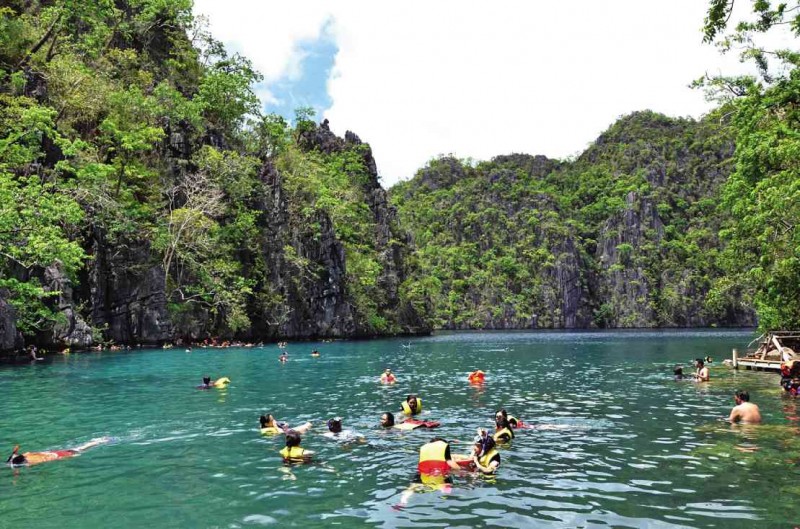I could have sworn it was not steep until I climbed it and had to jump. It was not even the cliff top, just a narrow rocky ledge below the peak, perhaps 1.5 stories high. It was no big deal. Or so I thought.
My friends and I were on a postgraduation trip in Coron, Palawan, and found ourselves one afternoon in Kayangan Lake—beautiful, serene, and enclosed by what seemed like rocky mountains and cliffs. We were nearing the end of our trip and casually asked our two tour guides if there were cliff-jumping spots in Coron. They mentioned certain areas, which were far from where we were, and said they sometimes jumped off a seemingly low ledge at the lake. They showed us how, and I immediately wanted to give it a go.
Our tour guides promised they would help me through it. The first said he would climb with me, and the second said he would wait for me at the bottom. It took me around three minutes to clamber through the sharp and spiky stems and outcrops and close to seven minutes to get to the top, muster the courage, fix my stance, and finally leap into the water.
Those 10 minutes felt like forever; so many thoughts came over me, including disbelief that our tour guides made it look so easy (to be fair, they may have been jumping off even higher cliffs all their lives), and awareness that everyone at the lake was looking at me and attentive to my endeavor (I may or may not have been screaming), among other things.
Frankly, I was not sure what it was that prodded me to make the effort. It could have been the decision that I was not going back down through those outcrops again, or my friends’ encouragement arising from their genuine concern to look after my mental health and physical wellbeing, or my complete lack of reasoning at the time.
In a split-second decision, I held my breath and did it. Briefly I was bare and exposed in midair. When I was submerged in the water, I felt a huge sense of relief wash over me. I swam up and, as I did, I felt the second tour guide grab my arm to help me surface faster. He kept his word. They both did.
To say it was fun is to make an understatement.
Days later, as my friends and I were waiting for our flight back to Manila, we browsed through our vacation photos and looked back on our trip. Questions entered my mind: What made me trust our tour guides? Why did I believe that, as long as they were there by my side, nothing horrid would happen to me and the entire cliff-jumping process would be smooth sailing? I thought: How uncharacteristic and irrational of me.
But the thought saddened me. I realized that not trusting strangers was rooted in my upbringing. We had always been told: Do not talk to strangers. Do not look them in the eye. Whether unintentional or not, mistrust and fear are somehow deeply ingrained in our culture.
I neither pose nor point blame. With all the news of kidnapping, theft and other crimes, we must be careful and realistic.
But I dream of a day when we can walk our streets at night without fear or feeling unsafe, and ride public transport without hiding our smartphones and protectively clutching our valuables; when the perception of trustworthy strangers is no longer a rarity; and when a criminal outlook on strangers is the exception rather than the rule.
I hope for a day when we are no longer afraid to jump, because maybe it is then, when we are exposed and away from the comforts of familiar grounds, that we can open ourselves up to new and life-changing experiences, listen to other people’s stories, truly connect with others, lend a helping hand, make a new friend, and perhaps make a small difference.
I don’t know how our tour guides are doing. To be honest, they may not remember me and I may not recognize them if we cross paths again in some random place. But I’m glad that a short moment of apprehension and an impulse for adventure led me to trust those then-strangers. They taught me that, sometimes, there is no harm in jumping.
Leean M. Tria, 20, is a new management information systems graduate of Ateneo de Manila University.
